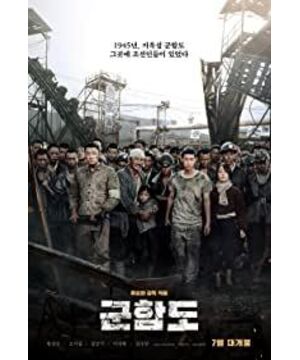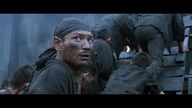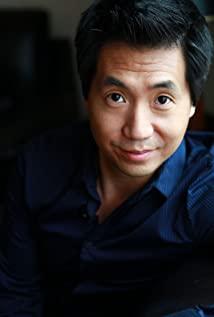After World War II, Gunkanjima, which was supposed to be a symbol of the evil of militarism, has now become a tourist attraction and a world cultural heritage. It has to be said that it is an irony and painful memory for countries in East and Southeast Asia that have suffered from the shame and pain of aggression. On the one hand, South Korea’s ability to make the film Gunkanjima is a face-up to history and a critique of militaristic Japan, and it deeply reflects the theme of anti-war. There can be more reflections in a bunch of anti-war films. Connotation, innovation, it has to be said that it is a very smart attempt. The film is more than two hours long, and the middle narrative is lengthy, especially the link to the climax in which the North Koreans escaped from Gunkanjima at the end is so long that it weakens the effect of the climax to some extent. The make-up and details of the film, the war scenes are full and real, and may cause some discomfort to the senses. The action scenes, especially the fight in the bathroom, are really exciting. The quick editing is not abrupt, and it is also successfully embedded in the development of the plot. Some of the action scenes are very refreshing and real (and exaggerated in some places), which makes people see a kind of "relieving" effect, which also shows the rationality of the plot arrangement and the success of characterization, such as Cui Qixing in the escape section. Kill Song Zhongqiu for a paragraph. The overall tone of the film is cold, and it is rare to see scenes with the sky. Many of them are in dark mines and rooms. Even if the sky appears, it is only drowsy and gloomy. Black hair of death. To a certain extent, this dark atmosphere creates a contrast and metaphorical complement to the cold tone and the brief shot of escaping from the Battleship Island in the back. There is no dawn, blue sky, and blue sea in the entire film, which all appear at the end of the film. I have to say that the ending of this film is the best part of the whole film in my opinion. The only light of day is the nuclear warhead that exploded in Nagasaki. A North Korean who escaped from the hell of death on the ship said that there must be many North Koreans in this place. On the other hand, it also revealed that in the war, people only was the biggest victim, revealing the anti-war theme. The golden light of the nuclear warhead explosion represents the escape of these North Koreans, replacing the dawn of the sun that often appears in film and television dramas. It is very novel and has rich meanings. These people who have been through hardships have seen the innocent people who are paying their lives for the crimes committed by the state machine. The ending is shown in black and white, and the only color is the color of the nuclear warhead explosion. Is the weapon that kills at this moment a light of hope for their redemption, and fireworks to celebrate the victory of the war? This is not only thought-provoking, but the tears of the little girl at the end directly express the anti-war theme. In the past seven or eighty years of World War II, many young people seem to have forgotten the painful history and the era of dehumanization. They made such a movie, and briefly explained the past and present of Warship Island in the form of subtitles at the end of the movie. served as a reminder. It is worth mentioning that at the beginning of the climax, the Koreans on the warship island began to flee, and there was a relatively cheerful orchestral music. The protagonist of the film is also the boss of the orchestra, but this image was not well connected with the whole film. Regret. The climax passage is too long, and it is impossible to use orchestral music to set the effect of sadness with music, so the silence and lamentation in the middle and later stages have a better expressive and touching effect. I personally think that the most outstanding part of the whole film is the image and connotation of the nuclear bomb explosion at the end, as well as the unique way and value expressed in audio-visual language (upgraded shots, black-and-white and color contrast, backlighting, and overall tone contrast), This has a direct baptism of people's glasses and brains and minds. However, there are still some places in the film that represent a more radical approach that is common in Korea for anti-Japanese effects, such as tearing a section of the Japanese military flag. And the groups on the warship island are not only Koreans, but also Chinese and Southeast Asians. The film almost never mentions them, which one-sidedly highlights the Koreans. The whole film does not seem to be atmospheric, and it seems to blindly borrow the material of Warship Island, and it loses the connotation of becoming a blockbuster. I personally think that the most outstanding part of the whole film is the image and connotation of the nuclear bomb explosion at the end, as well as the unique way and value expressed in audio-visual language (upgraded shots, black-and-white and color contrast, backlighting, and overall tone contrast), This has a direct baptism of people's glasses and brains and minds. However, there are still some places in the film that represent a more radical approach that is common in Korea for anti-Japanese effects, such as tearing a section of the Japanese military flag. And the groups on the warship island are not only Koreans, but also Chinese and Southeast Asians. The film almost never mentions them, which one-sidedly highlights the Koreans. The whole film does not seem to be atmospheric, and it seems to blindly borrow the material of Warship Island, and it loses the connotation of becoming a blockbuster. I personally think that the most outstanding part of the whole film is the image and connotation of the nuclear bomb explosion at the end, as well as the unique way and value expressed in audio-visual language (upgraded shots, black-and-white and color contrast, backlighting, and overall tone contrast), This has a direct baptism of people's glasses and brains and minds. However, there are still some places in the film that represent a more radical approach that is common in Korea for anti-Japanese effects, such as tearing a section of the Japanese military flag. And the groups on the warship island are not only Koreans, but also Chinese and Southeast Asians. The film almost never mentions them, which one-sidedly highlights the Koreans. The whole film does not seem to be atmospheric, and it seems to blindly borrow the material of Warship Island, and it loses the connotation of becoming a blockbuster.
View more about The Battleship Island reviews











